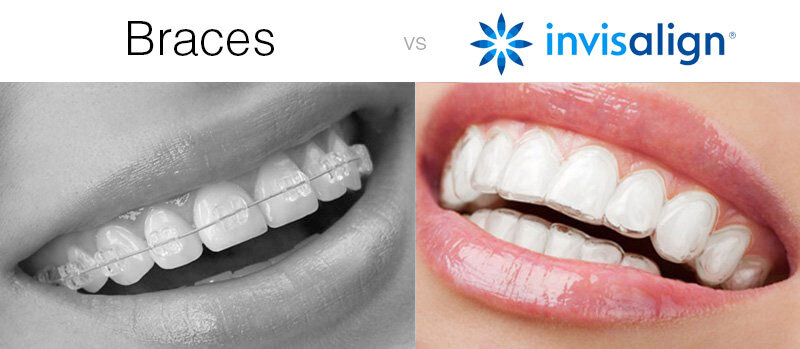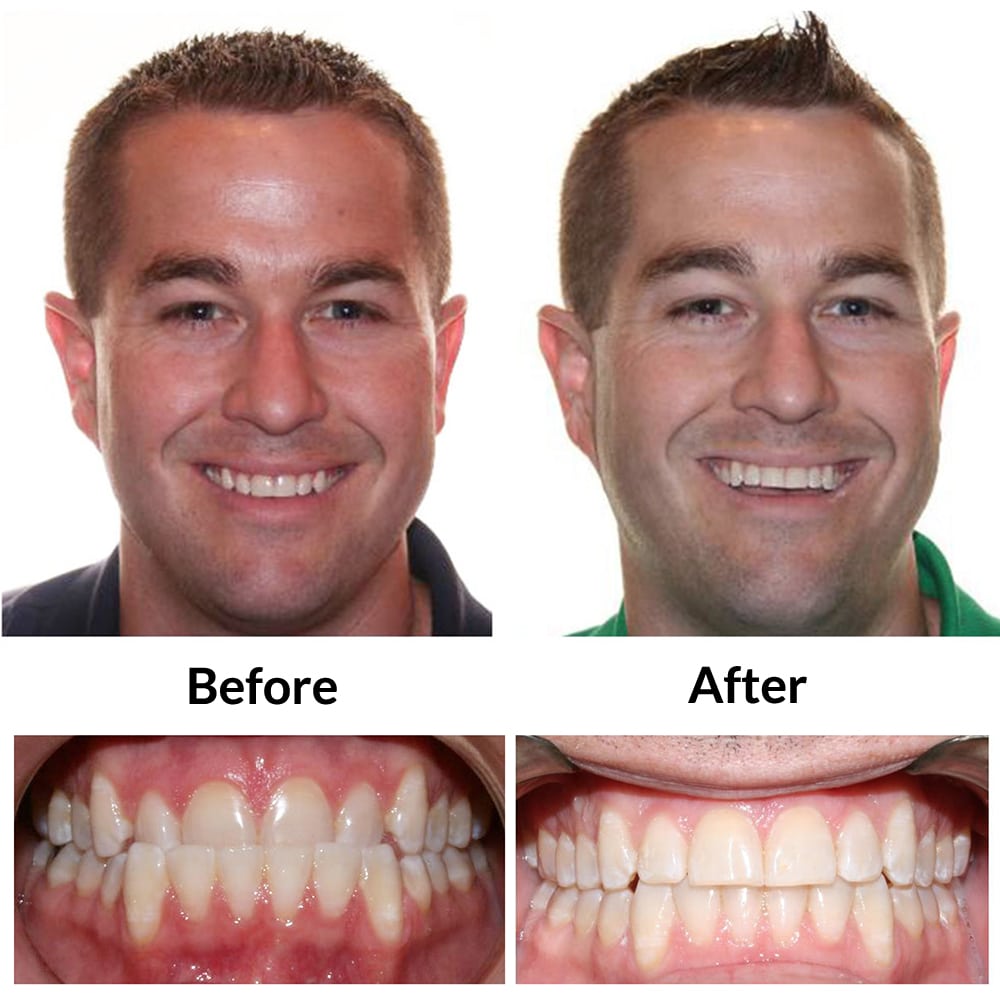Preserving Oral Health While Using Invisalign: Tips for a Smooth Experience
Preserving Oral Health While Using Invisalign: Tips for a Smooth Experience
Blog Article
Invisalign vs. Standard Dental braces: Which Alternative Is Right for You?
When taking into consideration orthodontic treatment, the selection between Invisalign and conventional braces provides numerous important aspects that merit careful assessment. Invisalign provides a discreet choice with removable aligners, while conventional dental braces provide a much more visible yet effective remedy for extreme imbalance.
Introduction of Therapy Options

In comparison, conventional braces contain metal braces and cables that are bonded to the teeth. This approach applies constant stress over time to accomplish positioning. While effective for intricate orthodontic concerns, standard dental braces call for normal brows through for adjustments and can position challenges in keeping dental health because of the difficulty of cleansing around wires and braces.
Both options have their values, and the selection frequently depends upon details dental conditions, way of life preferences, and client conformity. Ultimately, consulting an orthodontic specialist is critical for determining one of the most appropriate therapy strategy tailored to specific demands. Understanding the subtleties of each choice can dramatically influence the overall success of orthodontic therapy.
Visual Factors To Consider
A substantial aspect affecting the selection in between Invisalign and conventional braces is the aesthetic allure each therapy supplies. Invisalign aligners are crafted from clear plastic, making them practically invisible when put on.
On the other hand, conventional dental braces include metal brackets and cords, which can be a lot more visible. While advancements in orthodontic technology have actually caused the development of smaller sized brackets and colored elastics, typical braces still preserve an even more obvious account. For some individuals, the visibility of dental braces may hinder them from looking for required treatment.
Eventually, the selection in between Invisalign and traditional dental braces might depend upon personal choices concerning looks. Clients that focus on discretion frequently favor Invisalign, while those that are less worried about exposure might choose standard braces. Recognizing the visual implications of each choice is important for making an informed decision that aligns with one's way of life and choices.
Comfort and Convenience

In regards to benefit, Invisalign aligners are detachable, making it possible for clients to appreciate their favorite foods without restriction and keep optimum oral health. Cleaning and flossing are simplified, as the aligners can be obtained throughout these regimens, whereas standard braces need mindful navigating around brackets and cables.
Additionally, Invisalign's modern system enables fewer orthodontic visits. Individuals normally obtain several sets of aligners at the same time, which can enhance the therapy procedure and minimize time invested in the orthodontist's chair. On the other hand, typical braces demand routine modifications, making them less practical for those with busy routines. Invisalign. Generally, the comfort and benefit of Invisalign make it an attractive choice for many people looking for orthodontic therapy.
Treatment Period and Efficiency
While both Invisalign and standard dental braces are efficient in correcting dental misalignments, the period of therapy click can vary significantly in between both options. Typically, Invisalign therapy can take anywhere from 12 to 18 months, relying on the complexity of the instance. The clear aligners function by progressively shifting teeth right into their wanted placements, and normal follow-ups with an orthodontist aid make certain progress stays on track.
On the other hand, standard braces usually call for a longer commitment, typically varying from 18 months to three years. This results from their set nature and using brackets and wires, which can be a lot more efficient for complicated situations and extreme misalignments (Invisalign). The therapy efficiency of traditional dental braces is well-documented, as they permit accurate changes and greater control over tooth movement
Inevitably, the selection between Invisalign and traditional dental braces might hinge on both the expected treatment period and the specific oral concerns at hand. Consulting with an orthodontist is vital, as they can supply tailored suggestions based upon specific requirements, making certain the picked method straightens with wanted timeframes and end results.
Cost Contrast and Insurance Choices
Expense plays a considerable role in the decision-making process for individuals taking into consideration orthodontic therapy, whether going with Invisalign or traditional dental braces. Typically, the expense of Invisalign varieties from $3,000 to $8,000, while conventional dental braces commonly set you back between $2,000 and $6,000. Aspects affecting these prices include the complexity of the case, the duration of treatment, and geographical area.
Several dental insurance coverage strategies give partial coverage for orthodontic treatments, but the specifics can vary extensively. Typically, conventional dental braces might be extra regularly covered by insurance plans compared to Invisalign, which some insurance firms classify as a cosmetic treatment.
In addition, several orthodontic practices supply versatile repayment plans, making both treatment choices much more obtainable. Individuals click this should inquire concerning possible funding choices and discount rates for upfront settlements. Evaluating the complete cost, including insurance policy benefits and layaway plan, is necessary for making an educated choice that straightens with both visual preferences and budget factors to consider.

Verdict
In recap, the option in between Invisalign and traditional braces hinges on several variables, including visual choices, comfort, treatment period, and cost. Invisalign supplies a very discreet, detachable alternative that assists in oral hygiene and nutritional adaptability, while traditional dental braces might be preferable for complex oral issues and typically come with a lower price factor. Eventually, assessment with an orthodontist is essential to analyze specific conditions and determine the most appropriate treatment choice for attaining optimum oral positioning.
When taking into consideration orthodontic therapy, the selection in between Invisalign and standard dental braces provides several important aspects that merit cautious examination.Contrasting Invisalign and traditional braces exposes unique treatment options for orthodontic correction.While both Invisalign and traditional braces are reliable in correcting dental misalignments, the duration of therapy can vary substantially between the 2 choices.Price plays a considerable role in the decision-making process for people thinking about orthodontic treatment, whether opting for Invisalign or conventional braces.In summary, the choice in between Invisalign and traditional braces hinges on numerous aspects, consisting of visual choices, convenience, therapy duration, and expense.
Report this page